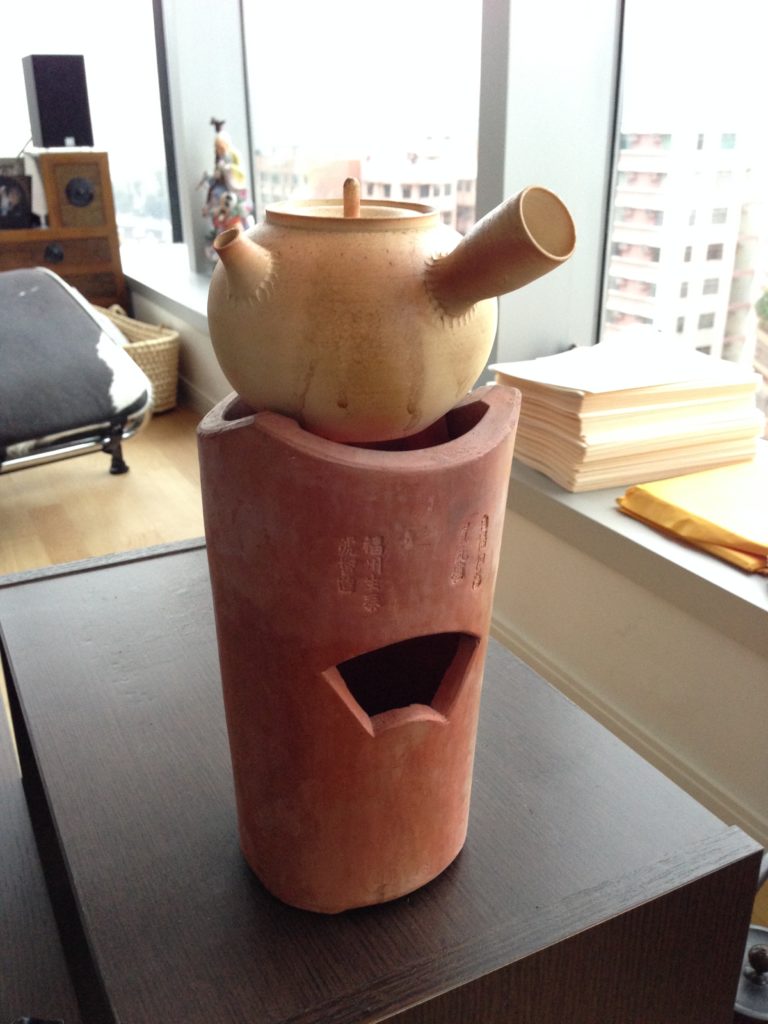It’s pretty common to see listings of tea with the word “artisnal” thrown in there. What does the word really mean in these context? Obviously it’s derived from the word “artisan” and generally mean that the tea you’re about to buy was made by an artisan. Ok, so far so good. So what?
More specifically, when is a tea not made by an artisan?
I suppose you can use this term to apply to teas that are purely hand made, farmed without machinery, and so on. I can assure you, however, that any tea you buy online does not fall into that category – teas like that are exceedingly expensive and very rarely done. Lots of farmers in China and Taiwan are independent farmers, but almost all of them use machinery as aids in the process of producing the tea. This can be large scale farming equipment, to something as simple as a roller and a shaqing machine for their teas. For oolongs, for example, rolling is a particularly backbreaking task – takes forever, lots of work, and hand (or foot) rolled teas are not as pretty as machine rolled ones. So these days they’re all machine rolled. Those balled up oolongs you love so much from Taiwan? It’s thanks to the machines that you have that shape.
Nor should we romanticize the past as some golden age when people made everything by hand. Sure, they did that, maybe, but that’s mostly because they couldn’t afford the machines that would make their life easier. Nobody prefers to spend hours rolling a ball of tea or sweating in front of a giant wok frying the tea when they can just do it more evenly, more predictably, and with less effort by the possession of a machine. These contraptions exist for at least a century now. I’ve read colonial period Taiwanese books on tea horticulture that detail the use of these things – rollers, shaqing, shakers, whatever you need. The problem was not so much invention – that’s the easy part. The problem was access. It was too expensive to afford a lot of these things. So at first, a whole village would invest in one and people would take turns using it. Then, as the cost of the machinery got lower over time, everyone had one.
We saw this type of change happen in Yunnan as well in the past decade. Before 2004, and before the crazy boom of puerh prices, Yunnan farmers were dirt poor. People cut down tea trees, sometimes really old ones, to plant rubber trees instead, because rubber was worth a lot more. Those who kept their tea trees got lucky, and now many of them have machines to aid them in the processing of teas – shaqing being most common, but also other measures. Tea picking has also been farmed out, often times, to people from poorer areas or villages. It’s hard work, and those farmers lucky enough to live in rich tea villages don’t really want to do that stuff anymore.
There’s also the relative skillsets involved – just because you made it by hand doesn’t automatically make it better. An old tea hand I know in Taiwan told me that a certain tea farmer in Pinglin used to be good – in the days of their grandfather, but the skills have either been lost or just not there, and so this generation’s teas are so-so. Some people are just better at some things than other, and variation is to be expected. Within a whole group of people, some will be better at a task than others. They can all do things basically the same way and the outcomes will be different. An artisanal tea grown in, say, Lantau Island in Hong Kong is still going to be terrible, because the climate just isn’t right and the tea is grown in a pretty bad environment. The skills of the artisan also just isn’t there (yes, I’ve tried the tea). Artisanal doesn’t mean anything.
Even long history is no protection – yes, they might have family secrets passed down if the family’s been in the business for a long time, or they might not. In fact, think of it another way, a family might be in a tea business for so long not because they were successful, but because they weren’t successful enough (and thus didn’t make enough money) to move into other more lucrative ventures. Very few people choose to remain smallholding tea farmers if they had a choice – tough work and low reward even with machinery as aids, especially in a rapidly industrializing society with lots of new opportunities. Better off going to school and becoming an engineer. Before you say I’m just being cynical, I have family relatives whose families did make tea and then moved away from it. It’s a very real option and most people, when given the choice, will choose to leave the farm.
Then you have stuff like this
Yes, some of you will object that this is large scale industrialized tea made for mediocrity. That’s right, but there’s lots of skill here, and the fact that a tea blender can easily re-create a recipe given the raw ingredients just by tasting is nothing short of amazing.
So next time you see that description of the tea you want to buy as “artisanal”, please remember that it means basically nothing.





Yeah whisky prices have been leaking too, as well as luxury watches. I wrote a post maybe a decade ago…